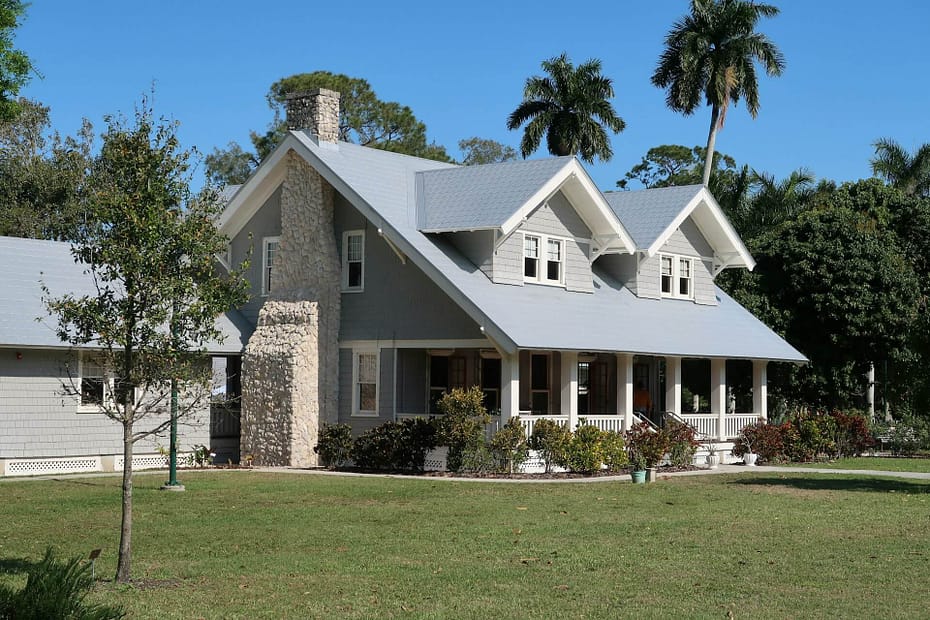The truth is, replacing a roof is not a decision you can or should make lightly. As a property owner, you should understand that the most significant hurdle is knowing the best time of year to replace your roof. A high-quality roof should last approximately 20-30 years.
If you own your property long enough, you may need to replace your roof. Learning to time your roof replacement is a valuable skill and will save you from wasting money. Yet, many people still question when they should replace their roofs. There is no simple answer, and it depends on your roof’s condition, budget, and seasonal conditions.
How Do You Know When to Replace Your Roof?
When was the last time you took an interest in the condition of your roof? If you inspected your roof recently, was there anything that caught your attention? Changes to your roof happen over time, but knowing when it’s time to replace it can be a challenge.
You may have missed these minute changes, but one day, you spotted missing shingles or loose flashing flapping in the wind. Nevertheless, the signs of a deteriorating roof were always there. It takes someone who deeply understands roofing materials to know when it is time to replace your roof.
You should contact a roofing contractor for an inspection if you notice anything wrong with your roof. During an inspection, a contractor is looking for signs, such as:
- Curled shingle edges
- Missing granules that leave bald spots on your shingles
- Your roof is over 20 years old
- Leaks that contribute to water damage
A roofer will thoroughly inspect each part of your roofing system before advising you about the issues. Depending on the severity of the problems, you can opt for the maintenance you may have put off or schedule a roof repair service.

How Much Does It Cost to Replace Your Roof?
Many aspects of roofing are interconnected. Understanding the cost of replacing your roof depends on more than the cost of materials.
Keep in mind that many factors influence the final price tag. Before seeking a roofing contractor, you must understand how they change the project:
- What Roofing Material You Choose: The type of roofing material you choose will heavily impact the cost. Metal and slate roofing are the most expensive materials, and they require specialized skills to install. Asphalt shingles are a budget-friendly option, and many flat roof materials, such as BUR or modified bitumen, are more affordable.
- The Size of Your Roof: A larger roof will need more materials, a buffer for unintended developments, and more laborers, which leads to higher costs.
- The Slope and Pitch: Steeper roofs are more challenging and hazardous to work on, increasing labor costs. Seasonal changes can also affect the safety of a roofing job, and costs will reflect that.
- Where You Live: Roofing fees, materials, and permit costs vary depending on where you live. These variables can make getting accurate estimates more challenging.
- Permits and Inspections: Permitting requirements vary widely and depend on how your municipality handles these activities. It makes sense that permits and inspections would increase your overall costs.
Sometimes, installing a new roof does not go as planned. Some obstacles may get in the way and take more time to handle. For example, seasonal changes could cause delays from rain, flooding, or wildfires.
That’s why contractors have to keep these potential challenges in mind at all times. Naturally, these unplanned scenarios could increase the cost of replacing your roof. A homeowner or business owner may not know what to expect.
With this level of uncertainty, estimating roofing costs and knowing what is the best time of year to replace your roof may seem impossible.
Finding Roofing Conditions That Are Just Right
We understand your concern with the cost of replacing your roof, but considering pricing alone is not enough. Your roof’s condition and cost will determine the best time of year to replace it, but seasonal conditions also make a difference. You can think about the ideal roofing conditions as the Goldilocks zone – not too hot or too cold, but just right.
So this means that temperature and weather will have a major influence on the project’s success. Other industries, like agriculture, depend on seasonal influences to know when to grow crops. Plants have specific seasons where they thrive and those where they won’t; roofing is much the same way.
Extreme heat can make shingles flexible and hard to handle, while the cold can slow or stop adhesive curing for flat roofs, potentially leading to leaks. The goal should be to replace a roof during a stretch of moderate temperature days (between 55°F and 80°F) for the best workability. You need dry weather, as rain, snow, and excessive humidity cause delays and create safety hazards for workers.
Other Seasonal Considerations For Residential and Commercial Roofing
Before replacing your roof, consider the “shoulder seasons” when looking for the best conditions. They have moderate, stable temperatures and a lower chance of extreme weather events.
Business operations and potential disruptions can still happen, but scheduling work during slower days or off-hours can help minimize downtime. With this approach, a roofing project has a low impact on the business, its employees, or potential clients, allowing property owners to plan accordingly.
- Spring: The season has relatively mild temperature fluctuations and warmer days, making it a favorable time for roofing. However, spring showers and windy days could cause delays.
- Summer: Summer provides extended daylight hours, but the higher temperatures can be a safety hazard. The early summer work months work best as there is lower humidity, and hurricanes and tornadoes are most active in late summer.
- Fall: Like Spring, Fall offers moderate temperatures, drier weather, and low humidity. As winter approaches, though, the weather can be more unpredictable. Many roofers agree that Autumn’s stability makes it the best season for roofing.
- Winter: These cold months bring freezing temperatures, snow, and ice, making roofing projects dangerous. This time of year can be deceiving as winter is usually cheaper because of lower demand. Some unfortunate property owners find out that cheaper is rarely better.
What is the Best Time of Year to Replace Your Roof?
With all these considerations, deciding the best time of year to replace your roof may be more complicated. Larger or more detailed roofing projects may require more lead time and planning. Custom roofing jobs demand that contractors consider the scope of the work when booking a job.
Many roofing variables are linked and influence each other enough to change the scenario. Summer and fall are ideal for roofing due to their favorable weather conditions, but the best time depends on your unique circumstances. A local roofing professional can help you plan for the best time of year to replace your roof based on information about your property.
But even if you find a reliable contractor, you still need a reliable way to find high-quality roofers and get accurate estimates.
There is a way to make roofing more transparent and accessible to everyone. At Instant Roofer, we have refined the complexities of roof replacement into innovative online tools that simplify the roofing process.
Instant Roofer Takes the Guesswork Out of Roof Replacements
Roofing should be easy for property owners and contractors to understand, no matter where or when a project occurs. We are a leading provider of creative and powerful roofing technology solutions. These tools help us serve you by removing entry barriers to the roofing industry.
Anyone can access our tools and use our resources to understand when it is the best time of year to replace your roof. Our roofing calculator uses AI to assist you as you plan your project, estimate costs, and connect with qualified roofing professionals in your area. Do you want to know the roof replacement cost before you start working with a contractor?
Our user-friendly tools are the perfect place to begin. Using our roof replacement cost calculator is quick, accurate, and free. You will receive accurate information based on real data about your property. You may not be familiar with roofing, but our cost calculators provide a stress-free, step-by-step guide for getting the best estimates.
Don’t wait until leaks or roof damage force your hand. Proactive planning and smart technology can help you stay ahead and avoid delays. Take the guesswork out of planning your roof replacement with Instant Roofer.
Fact Checked by Lita Legzdina on 11/20/2024
